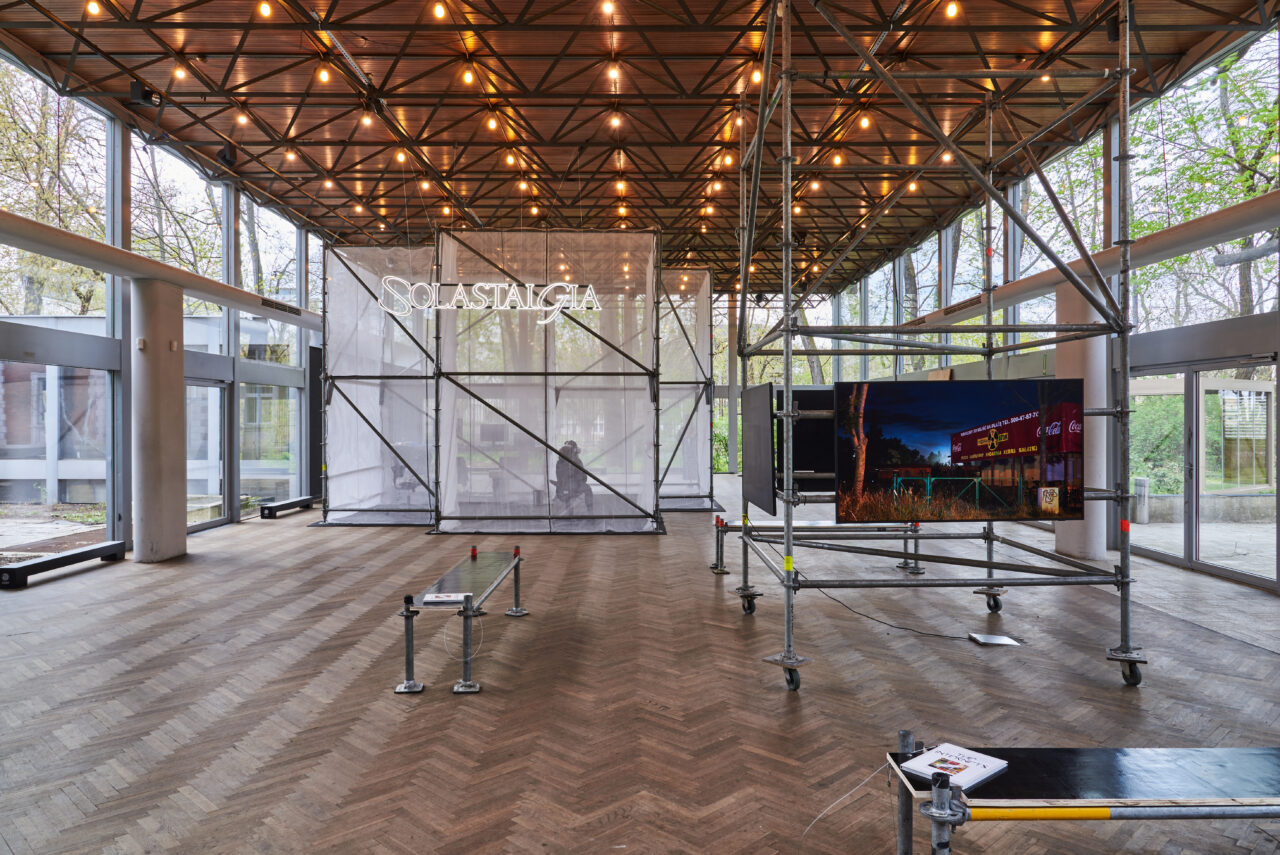Solastalgia

Solastalgia is a term coined by Australian philosopher Glenn Albrecht in 2010. It is used to describe the distress caused by environmental change, an inconsolable nostalgia, a homesickness for a home one has never left.
Our home is changing all around us – landscapes and natural ecosystems are undergoing degradation at a rate we are unable to emotionally integrate. While historically chaos and destruction were caused by wars and natural disasters, it is the human need for growth, development and construction that transformed into a devastating force in the current age. All around the world natural landscapes have been completely ravaged, and not only by wars and large-scale industrial activity. Everyday life – as a sum of hundreds of thousands of homes, small businesses, workplaces, shops and transportation facilities – has caused a landscape catastrophe. Szymon Rogiński registers Polish townscapes using both a telephoto lens and a wide-angle drone camera. He sees both the intimate emotions, the poignant efforts of local people and the disastrous effect they contribute to, posing questions of the weight of our presence in the material and virtual world.
Photography: Kebabs, Internets, Tombstones
In Poland, traces of socialist central planning implemented between the 1950s and 1980s coexist with the architectural remnants of unrestricted low-budget entrepreneurship of the transformation era. All these are slowly being suppressed by corporate capitalism efficiently laying foundations for a new era of motorways and storage facilities. Societal change manifests in the choice of building materials. Wood, brick and tar paper were replaced by plastic “siding” and prefabricated concrete fences with arabesque-like details in the 1990s, after which came the era of aluminium, glass and asbestos, forwarding centres and shopping malls. But time doesn’t flow equally fast in various places. Transformation in the suburbs never ends and is never successful. Szymon Rogiński ventures out into the meanders of vernacular architecture, registering intimate rituals of modernisation on a micro scale. Internets – meaning internet cafes and PC service points – show the provincial face of digitisation and the ubiquity of the web. The migration crisis and parochial nationalism are symbolised by Kebabs – cheap eateries owned by economic expatriates, whose clients are often locals representing nationalist and xenophobic sentiments. The Tombstones series points to contemporary spiritual confusion and commercialisation of the sacred. However ugly, poor and funny their subjects, Rogiński’s photographs can be considered pretty and moving in their own way, imbued with affection towards the constant human effort.
Virtual reality – Solastalgia
A change of scale: a world full of chaotic, ugly buildings captured from above by the cold eye of a drone camera, presents its own horrific scale. Seeing the amount of destruction we have done to our landscape, it is difficult to feel sentimental over the naive aesthetics of provincial stores. Rogiński uses data acquired through photogrammetry to create a virtual reality environment. The result is an apocalyptic world, terrifying in its ugliness and simultaneously realistic and familiar. The conscious use of the VR technology allows us to see the true face of the reality we live in. We speak more and more openly of the socio-psychological aspects of the climate crisis and the clinical mental disorders that develop in response to environmental deprivation (lack of access to the natural environment) and are conscious of the irreparable harm that the climate, landscape and the planetary ecosystem are subjected to before our eyes. Countless works are dedicated to the depression, anxiety and grief experienced by the younger generations. Isolation and travel restrictions imposed as safety measures during the pandemic helped those feelings disseminate. Given the immense pressure placed upon us, are we capable of feeling once more the unconditional faith in progress expressed by the modernists of the 20th century? Equipped with contemporary knowledge of ecology, economy, social psychology, can we put faith in the implementation of an urban meta-project? Improving the living conditions of humans is no longer the priority when life itself is at stake.
It is almost impossible to spot a human figure in Rogiński’s work, but human presence is touched upon in several aspects. He puts into question the differences between virtual presence and physical existence in the urban realm. Are we ready to share our cities with migrants?
Through the VR installation, the visitors will undergo an incorporeal flight over a desolate city, reminiscent of an out of body experience. Photographs of the Tombstones series remind us that one day we will all become funeral home customers.
Info
Informacje
Warsaw
14.04 – 28.04.2023
SARP Pavilion, Foksal Street 2
Cracow
May – June 2023
Museum of Photography MuFo, Rakowicka Street 22A
Colophon
Photography, photogrammetry and VR concept and direction: Szymon Rogiński
Curatorial supervision and exhibition design: Agnieszka Tarasiuk
Academic curator: Prof. dr. hab. arch. Bolesław Stelmach
NIAIU coordination: Kacper Kępiński
Musical theme: Macio Moretti
VR sound design and sound installation: Gustaw Gliwinski.
Production of the exhibition and VR application: Marcin Marczyk
Digital Artists: Pavlo Mazur, Martix Navrot, Jagoda Wójtowicz
Programming: Łukasz Nizik
Graphic design: Michal Babski
Special thanks to:
Wojtek Markowski, Michał Marczak, Krzysztof Garbaczewski